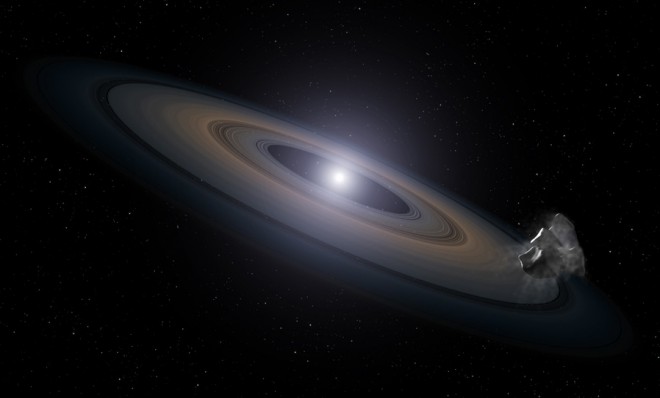What two dead stars reveal about Earth's origins
A couple of white dwarfs + space garbage = possible planet formation

Sitting on the nose of the constellation Taurus, about 150 light-years away from Earth in the star cluster Hyades, are the dulling embers of two white dwarf stars.
Under normal circumstances, the stars' burnt-out cores would be unremarkable. But scientists from Cambridge University peering through NASA's Hubble telescope noticed something peculiar.
Instead of being surrounded by mostly empty space, the stars' remnants were swimming in a dusty cloud of asteroid debris, likely smashed to bits by the dwarves themselves.
The Week
Escape your echo chamber. Get the facts behind the news, plus analysis from multiple perspectives.

Sign up for The Week's Free Newsletters
From our morning news briefing to a weekly Good News Newsletter, get the best of The Week delivered directly to your inbox.
From our morning news briefing to a weekly Good News Newsletter, get the best of The Week delivered directly to your inbox.
Surprisingly, the matter in this instance was mostly composed of heavy elements like silicon and carbon — the chemical building blocks of planets like Earth.
[The] research suggests asteroids less than 100 miles (160 kilometers) wide probably were torn apart by the white dwarfs' strong gravitational forces. Asteroids are thought to consist of the same materials that form terrestrial planets, and seeing evidence of asteroids points to the possibility of Earth-sized planets in the same system.
The pulverized material may have been pulled into a ring around the stars and eventually funneled onto the dead stars. The silicon may have come from asteroids that were shredded by the white dwarfs' gravity when they veered too close to the dead stars. [NASA]
"When these stars were born, they built planets, and there's a good chance they currently retain some of them. The material we are seeing is evidence of this," says Jay Farihi, an astronomer at Cambridge and lead author of the study. "The debris is at least as rocky as the most primitive terrestrial bodies in our solar system."
The discovery could shed light on how so-called "cosmic nurseries" — which produce stars and planets much like our humble blue marble — gather materials to create new worlds.
"If you have giant rocks that are many kilometers in size flying about, it is almost certain that planet formation has happened," Farihi told the Los Angeles Times. "It's like seeing a bunch of Lego blocks strewn around a kid's room. You know they were building something, but you don't know exactly what they are building."
A free daily email with the biggest news stories of the day – and the best features from TheWeek.com
It should also give astronomers a clearer indication of what happens when our own sun eventually runs out of fuel.
-
 Who is fuelling the flames of antisemitism in Australia?
Who is fuelling the flames of antisemitism in Australia?Today’s Big Question Deadly Bondi Beach attack the result of ‘permissive environment’ where warning signs were ‘too often left unchecked’
-
 Bulgaria is the latest government to fall amid mass protests
Bulgaria is the latest government to fall amid mass protestsThe Explainer The country’s prime minister resigned as part of the fallout
-
 Sudoku hard: December 15, 2025
Sudoku hard: December 15, 2025The daily hard sudoku puzzle from The Week